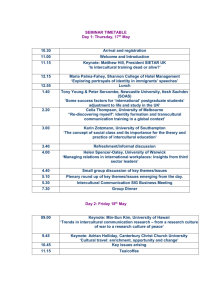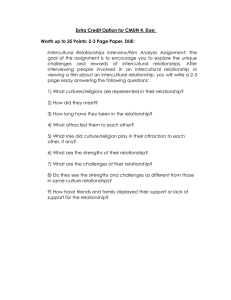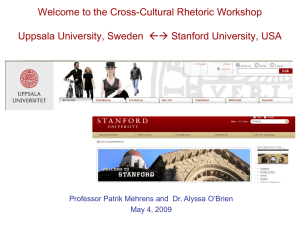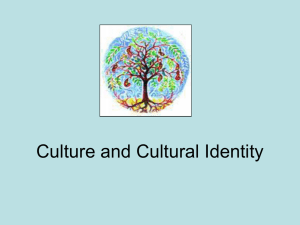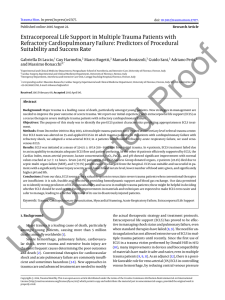INTERCULTURAL AWARENESS WORKSHOP • Culture • Communication
advertisement
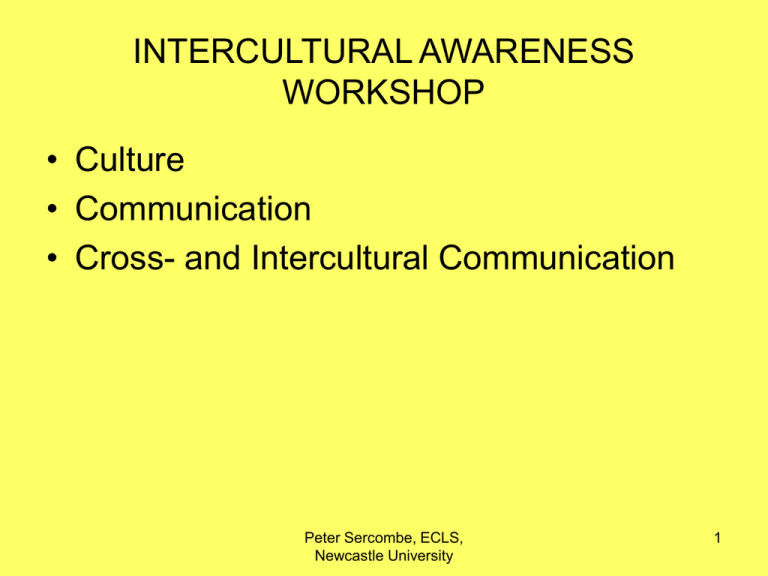
INTERCULTURAL AWARENESS WORKSHOP • Culture • Communication • Cross- and Intercultural Communication Peter Sercombe, ECLS, Newcastle University 1 Culture What does it mean? • ‘Culture or civilisation, taken in its wide ethnographic sense, is that complex whole which includes knowledge, belief, art, morals, law, custom, and any other capabilities and habits acquired by man as a member of society’ (Tylor 1871: 1) • Culture is an active process of meaning making and contest over definition … This then is what I mean by arguing that Culture is a verb (Street 1993: 25) • ‘Culture in all its meanings and with all its affiliated concepts, is situational’ (Blommaert 1998: n.p.) Peter Sercombe, ECLS, Newcastle University 2 Communication What does it mean? • 1 an act or instance of communicating 2 a verbal or written message 3 a process by which information is exchanged between individuals through a common system of symbols, signs, or behaviour (Longman Dictionary of the English Language 1991: 324) • ‘an information process going on between at least two human communicators (not necessarily two persons as long as one can communicate with oneself) embedded in a context’ (Berge 1994: 614) • ‘Communication is a term used to describe the structured dynamic processes relating to the interconnectedness of living systems’ (Birdwhistell 1973: 93) Peter Sercombe, ECLS, Newcastle University 3 Shannon and Weaver’s (1949) Model of Communication: Communication as a process of transmitting information - a ‘common sense’ view? message information source medium transmitter received message receiver destination noise source Peter Sercombe, ECLS, Newcastle University 4 Strengths and weaknesses of Shannon and Weaver’s (1949) model Strengths Simplicity Generalisability Quantifiability Weaknesses Metaphor Linearity Content and meaning Instrumentalism Context Relationships and purposes Time Medium Miscommunication Peter Sercombe, ECLS, Newcastle University 5 Culture’s links with communication • Communication creates culture: culture is a means of communication. Language carries culture, and culture carries, particularly through orature and literature, the entire body of values by which we come to perceive ourselves and our place in the world (Ngugi 1986: 15-16). Peter Sercombe, ECLS, Newcastle University 6 Cross- and Intercultural Communication What do they mean? • Cross-Cultural Communication (CCC) tends to compare patterns of communication and interactions across peoples from different cultural backgrounds (an ethnological position) • Intercultural Communication (ICC) considers (interpersonal) communication which has the added characteristics of cultural ‘variance’ between those people involved, in one or more areas, such as: values, beliefs, thought patterns, practices (including language) and other habits of behaviour. Cultural variance can be salient in that it can create differing expectations and interpretations of interactions between people. [See Scollon & Scollon (2001: 13) for the distinction they make between ICC and CCC, as well as Gudykunst (2000: 314)] • Is all communication intercultural? Peter Sercombe, ECLS, Newcastle University 7 Intercultural Communication Examples: http://uk.youtube.com/watch?v=s5S2LNOqe zE http://uk.youtube.com/watch?v=kvZNb_tFod w&feature=related http://www.bbc.co.uk/tribe/tribes/penan/inde x.shtml Peter Sercombe, ECLS, Newcastle University 8 Recommendations • Avoid ‘essentialism’ (i.e. assuming a set of properties as common to all members of a group) • Avoid ‘reductionism’ (i.e. identifying a single property as particular to a whole group) • The ‘Other is in Us and we are in the Other’ (Kramsch 2001: 205) Peter Sercombe, ECLS, Newcastle University 9 References • Berge, K. L. (1994). Communication. In R. E. Asher, & J. M. Y. Simpson (eds) The Encyclopedia of Language and Linguistics. Oxford: Pergamon, pp. 614-620. • Birdwhistell, R. L. (1973). Kinesics. In Argyle, M. (ed.) Social Encounters. Harmondsworth: Penguin, pp. 93-102. • Blommaert, J. (1998). Different Approaches to Intercultural Communication: A Critical Survey. Plenary lecture, Lernen und Arbeiten in einer international vernetzten und multikulturellen Gesellschaft, Expertentagung Universität Bremen, Institut für Projektmanagement und Witschaftsinformatik (IPMI), 27-28 February. http://www.flwi.ugent.be/cie/CIE/blommaert1.htm • Gudykunst, W. B. (2000). Methodological issues in conducting theory-based cross-cultural research. In H. Spencer-Oatey (ed.) Culturally Speaking. Managing Rapport through Talk across Cultures. London: Continuum, pp. 293-315. • Kramsch, C. (2001). Intercultural Communication. In R. Carter & D. Nunan (eds) The Cambridge Guide to Teaching English to Speakers of Other Languages. Cambridge: Cambridge University Press. • Longman (1991). Longman Dictionary of the English Language. London: Longman. • Ngugi wa Thiong’o (1986). Decolonising the Mind: The Politics of Language in African Literature. London: James Currey. •Scollon, R. & Scollon, S. W. (2001). Intercultural Communication: A Discourse Approach. Oxford: Blackwell (2nd edition). • Shannon, C. & Weaver, W. (1949). The Mathematical Theory of Communication. Illinois: University of Illinois Press. • Street, B. (1993). Culture is a verb. In D. Graddol, L. Thompson and M. Byram (eds) Language and Culture. Clevedon: BAAL and Multilingual Matters, pp. 23-43. • Tylor, E. B. (1871). Primitive Culture: Researches into the Development of Mythology, Philosophy, Religion, Language, Art and Custom. New York: Henry Holt. Peter Sercombe, ECLS, Newcastle University 10


